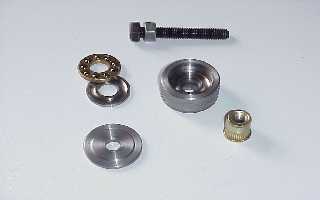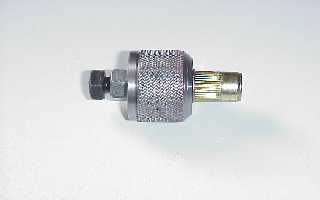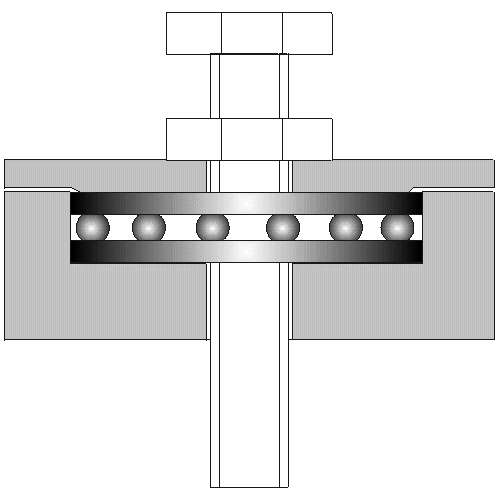

While building my chassis I realised that I would have to put quite a number of Rivnuts into the tubes, for fixing the scuttle, fastening the transmission tunnel cover, etc. I had a tool for setting the smaller sizes (up to 6mm in steel) but when it came to 8mm it was obvious that something better was needed.
Having seen the Rivnut home page I knew that it was possible to set the larger sizes using a spanner (wrench) with the correct tool. Taking the shape of the tool in the Rivnut catalogue as a guide, I set about creating my own version. Please note that a lathe is required to make the tool as shown here.


The knurling around the body proved to be unnecessary as, once the nut is turned, the body doesn't move. The following crummy drawing shows the relationship between the parts. No dimensions are given, as they depend on the size of rivnut you are setting, and the dimensions of the bearing.

The only critical component is the 3-part thrust bearing, which makes the operation of the tool really easy. I have set an 8mm Rivnut by holding the head of the nut in a socket wrench, while turning the nut with a small ring spanner. Not much effort is required.
IMPORTANT NOTE: I do not anticipate any legal problems if people copy this idea for their own use. However, making them for sale may incur the wrath of Rivnut Engineering Products as they might consider that it is too close to their own product. If it isn't too close, I might be upset if you make them for re-sale without crediting me!
If you are only going to set 1 or 2 rivnuts in place, or do not have access to a lathe, then there is another way: get a strip of metal, a few washers, a nut and a HT bolt to match the rivnut. If you're trying to set an 8mm rivnut, drill an 8mm hole in the steel strip near one end. run the nut up the bolt, follow it with a few washers, apply loads of grease, then put the end of the bolt through the steel strip. Screw the rivnut fully onto the end of the bolt, then insert it into the hole you've made in the chassis (or whatever). Start winding the nut towards the steel strip with a spanner - you'll probably need to have another spanner or socket holding the bolt head. Keep winding until you suddenly feel a lot more resistance - job done.
This does work, but will rapidly knacker the nut and/or bolt. It's a cheap way of doing a few rivnuts though.